Andy Potts Designs Wetsuits
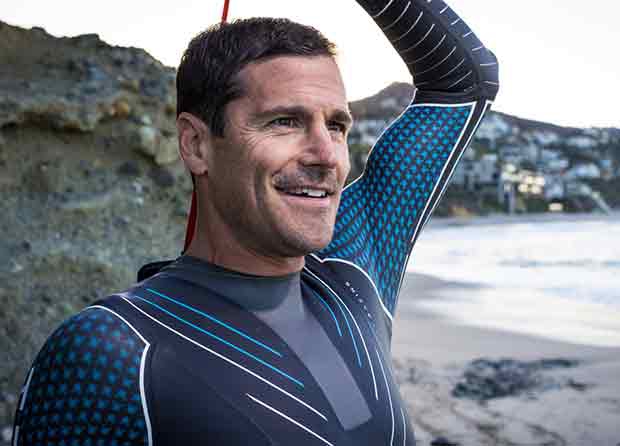
SLOWTWITCH: You’re been one of America’s premier triathletes for a generation. You were an Olympian in triathlon, Pan American Games champion, 70.3 World Champion, with many wins at the 70.3 specialty and in the full IRONMAN. You’ve been as high as 4th in Kona and before that you were a tick away from being an Olympic swimmer as well. You are noted for your range, your high placings, and your tenure in the sport. What I recently found out is that you were also on Michigan University’s track team. What was that all about? What did you run?
ANDY: I did run for a year at Michigan. It was after I had exhausted my eligibility in swimming. I had another year of school to earn my degree and secondary teaching certificate. I figured, why not! My only problem was that I had soft bones from 18 years of swimming and I suffered a stress fracture as the indoor track season was starting. I ran with the distance guys but focused on the mile. My coach was Ron Warhurst and I ran with some incredible runners, like Kevin Sullivan, John Mortimer, Jay Canton, and Steve Moffat.
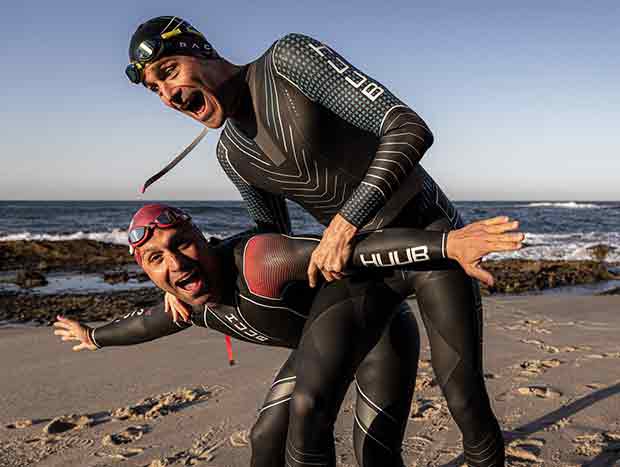
SLOWTWITCH: I am willing to shower praise and hurl calumnies on our top athletes like any fan. I don’t often find much that’s shameworthy in a person, but when a top pro disappoints me it’s in the rare case a pro falls short in how the business end is handled. But that’s changed in recent years and I’m struck by the professionalism, and for lack of a better term the business courage of Lionel Sanders, Jan Frodeno, Lucy Charles, and you. You in particular seem rather intrepid in your business ventures, and you are the hardest working pro I know, with fractional hours on your calendar penciled in with training or business. Do you see yourself that way? Unique among your peers in your business acumen and ambition?
ANDY: I’m not sure how to respond to this one. I have always viewed my career in triathlon to be my only plan. I was going to make it work no matter what. There are a lot of things that go on behind the scenes that go into a performance and to running your career like a business. I’d love to write a book about it someday. Success to me has always been about more than the number next to my name in the results. I’ve always enjoyed sharing my experiences with those closest to me, who support me, as well as those who are willing to take the risk on race day and share the course with me. Maybe it is because of how my parents raised me, the people I surround myself with or just who I am, but I always felt that sport is life but there is more to life than sport. I’m not a lone ranger in my preparation, I have the best partner in the world in my wife Lisa.
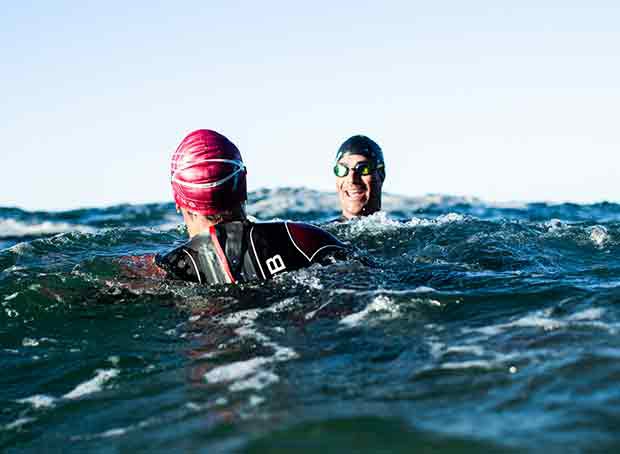
SLOWTWITCH: I understand you’ve both captured the U.S. distribution for HUUB wetsuits, and taken a role in the design of triathlon wetsuits. Do I understand correctly? What do you want to tell folks about this venture of yours?
ANDY: It is true. My team and I are the US distributors for HUUB. Since helping develop the Freak [a wetsuit made by TYR about a decade ago] Daniel Brienza and I have wanted to develop a full lineup of swim products and wetsuits because we had a lot of ideas, not just marketing talk, that could actually help all levels of swimmers. We tried to work with a few different brands but ultimately decided that we wanted to do it our way. So, we spent 4 years working on designs, prototyping, working with factories. As you know, getting factory space or certain materials can be difficult if you are not a big player. So, we sat down with Dean [Jackson] at HUUB and came up with a plan that could bring our designs to market. Our wetsuit, the Pinnacle, and our full lineup of products to be released is something I am so proud of.
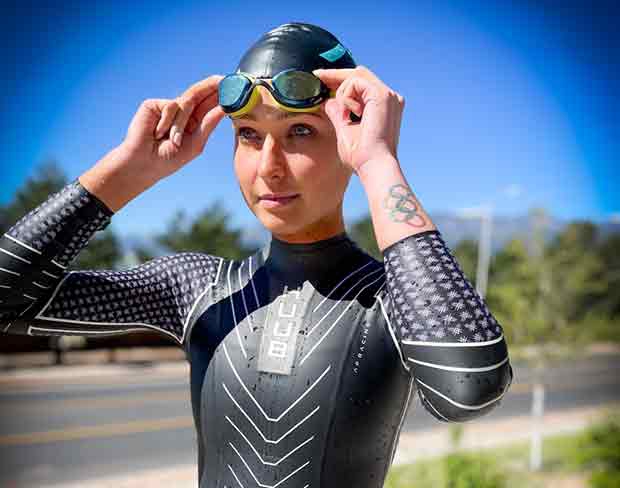
SLOWTWITCH: My questions will now get a little pointed because I have a bit of a background in wetsuits. Are the design elements in HUUB’s wetsuits what attracted you to this brand? The technical features? Or the infrastructure to make the wetsuit you want? What attracted you to this brand specifically?
ANDY: Great question. HUUB has been making world class products since its inception and has done a great job with its brand positioning; so we knew that was not an issue. Our measuring stick really came down to whether we could make the suits we wanted and continue to evolve the technology focused on suits that help not only the world class swimmer but the age grouper too. Our Aha Moment was when we got to take apart the Varman wetsuit. While a lot of folks will look at the Brownlee wetsuit as the flagship suit, pre-Pinnacle of course, and it is a fantastic suit, the Varman is probably the better suit for most swimmers and was really in line with where we were looking to go with the Pinnacle wetsuit and line of products.
SLOWTWITCH: Here’s what I see a lot: When truly great swimmers design wetsuits, or have a hand in their design, what comes out of that process are minimalist suits that have less rubber, or thinner rubber in strategic places, that lets those overwhelmingly good swimmers feel as if they can swim without the stroke or body position alterations which make swimming in a typical triathlon wetsuit cumbersome or unnatural. However, those minimalist suits are often slower for the average swimmer. Do you see that process I described as a thing? Or am I just wrong in my analysis? But if what I described is a thing are you guilty as charged, or did you stifled those instincts to design a line of suits that are good for me and not just you?
ANDY: Dan, you hit the nail on the head here and exactly what we did not want to do. We made it our mission to design our suits with our technology. [Technical claims which Andy both claims and makes fun of in a video]
In all seriousness, you are spot on. The number one thing we did when we designed the Pinnacle wetsuit for HUUB was to keep the average triathlete in mind. We wanted to make every swimmer a better swimmer, including the adult onset swimmer. You’ll notice that we raised the hips and legs by using Airprene [a model of rubber made by Yamamoto Rubber Company] to get them out of the way so you can swim downhill. We even added in some rigidity on the outside to eliminate snaking in the water. The rigidity and core panels add to the stability of any swimmer. We’ve kept the upper thin and very flexible. On the design side of things, swimming is constantly changing to create performance gains. Think back to the 80’s when we taught S pull patterns. When most of the current wetsuits were designed, one of the core design features were center panels to, as they say, help with rotation. We have since learned that this is not the right approach to faster swimming, especially in turbulent [open] water. Fast swimming is now more focused on having our body work like a canoe or surfboard and our arms/legs moving around it.
SLOWTWITCH: Can we talk about fit for a moment? Here’s another trend I see that I find unfortunate: The size charts don’t match the wetsuits. There are some pretty good size charts out there. ROKA. Sailfish. blueseventy. And by pretty good I simply mean the chart calls out morphologies that actually match the sizes of the suits that company makes. But I get the sense some of the brands just don’t place people in their suits to see if those size charts work. Since you’re handling stateside sales and distribution for HUUB it’s going to feel like the dog that caught the car if the size charts are off. Have you tested this? Are you confident you’re in good shape with this?
ANDY: This is another great point and something we have thought long and hard about. To be candid, I am comfortable with our size chart and getting folks in the right suit, for about 95% of the population. That isn’t good enough for me and we are working hard on this in the coming months. Until then, we try to do our best through our customer service team and educating customers at our swim clinics, events and camps.


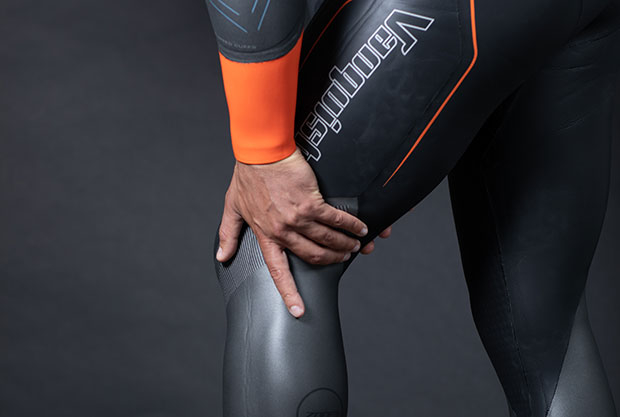
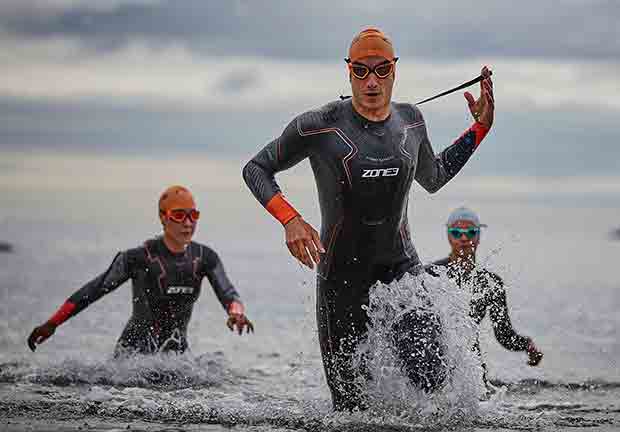
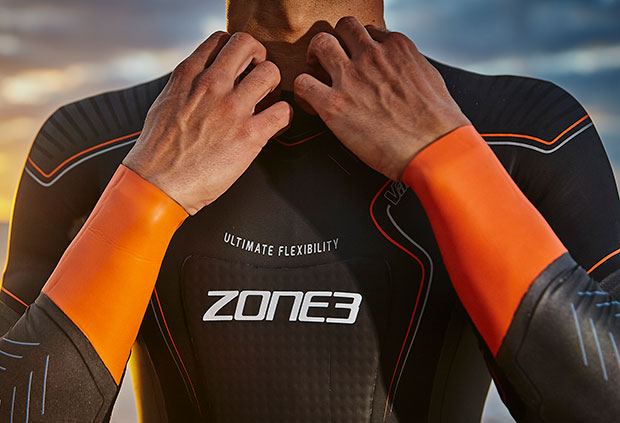
Start the discussion at slowtwitch.northend.network